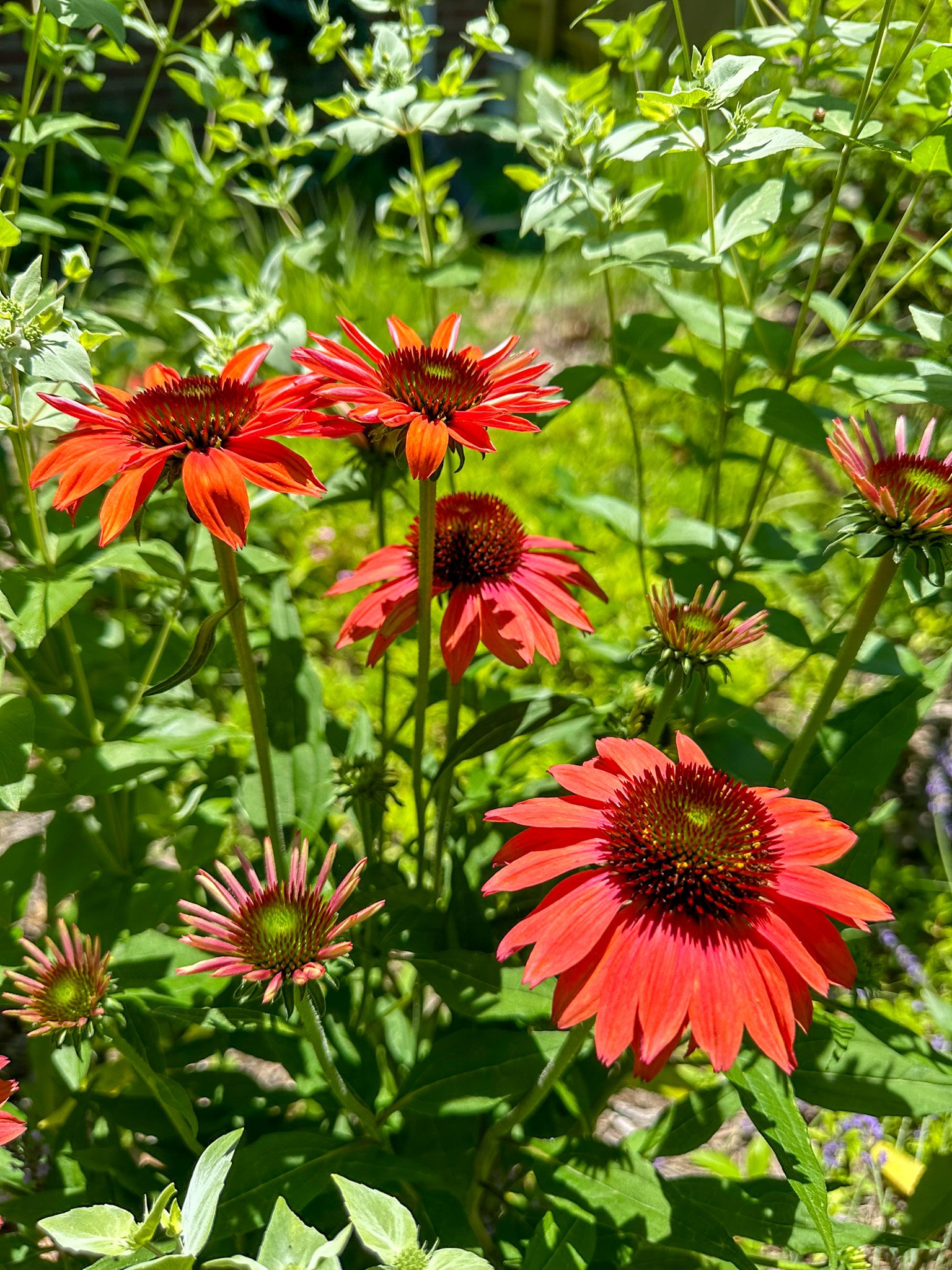Meet the Coneflower
Coneflower / Echinacea purpurea
How do you know it’s me? :
I am a showy flowering perennial.
I have a brown and spiky, often cone-shaped flower center with a single layer of long lance-like petals extending out from this center bundle.
My flower sometimes has a drooping appearance.
I have a little peach fuzz on my stem.
My raindrop-shaped leaves are usually alternate, sometimes opposite.
My leaves are usually rough-textured.
How big do I grow?: 2’ - 4’ height, 1' - 2' spread.
Sun-seeker or shade-lover: Full Sun
Where I prefer to put my roots: Well-drained soil. I am very drought tolerant and adaptable to various soil types.
Hardiness: Zone 3-8
Original home: I am native to the eastern and central US.
Colors: Generally I am purple, but white, red, orange, pink, and yellow varieties are also common.
When I bloom: Long-lasting blooms from summer to fall.
Wildlife friends: Bees and butterflies love me! Birds wait until after I bloom to munch on my seeds.
Flora Fun Facts: Echinacea is harvested from my flower, which people have used for immune system support for many years. Due to this, I am a symbol of strength and good health.
More Info: A patch of coneflower blossoms is often abuzz with activity, from bees bouncing from spiky blossom to spiky blossom, to birds observing hungrily from nearby. This eye-catching perennial plant from the Aster family (Asteraceae) is named for the Greek for hedgehog - “echinos” - due to the spiny texture of the flower center.
Hardy to a wide range of conditions and offer sought-after sources of food for a variety of wildlife.
Coneflower tends to self-seed and spread naturally within its space, but gardeners can limit this by removing the flower heads after they bloom - thereby reducing seed drop. Songbirds who are especially fond of the seeds, such as the Goldfinch, would prefer this practice happen in winter rather than late summer.
Hybrid varieties of coneflower are often sterile and will not spread as much as the species.
This plant is a perfect component to a pollinator garden or wildflower meadow and looks best when planted in groups.
They are very tolerant of pruning / cutting back and can be transplanted.
Coneflower combined with ornamental grasses and other native wildflowers makes for an especially beautiful composition.






